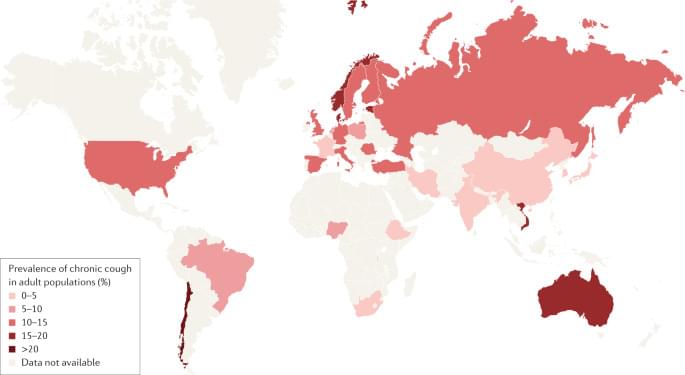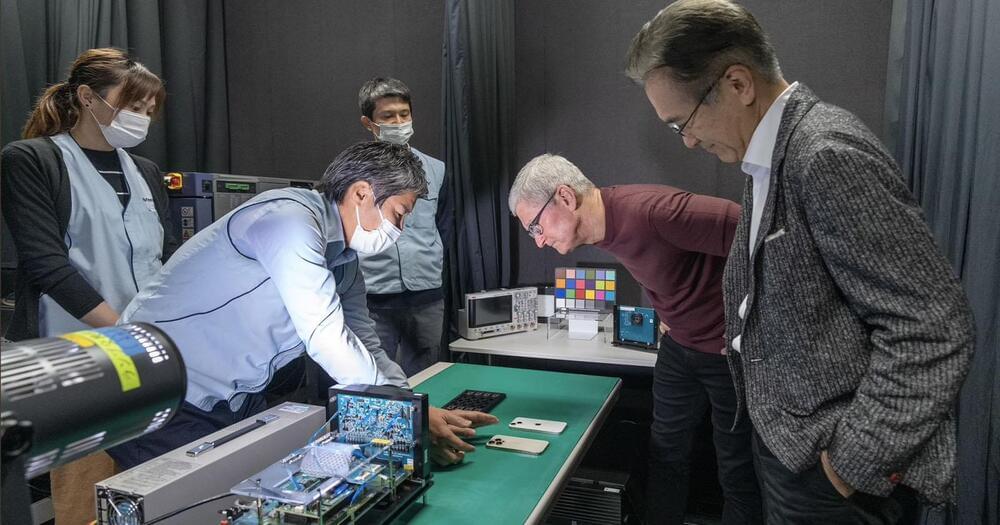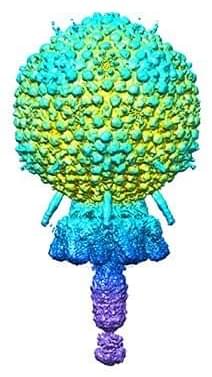A team of researchers managed to develop an ultra-resistant material that can stop projectiles at high speeds without breaking.



Winter and rainly season are worst for those who have chronic cough.even little rain increases throat pain.
This Primer by Mazzone and colleagues summarizes the epidemiology, pathophysiology, diagnosis and treatment of chronic cough and cough hypersensitivity. This Primer also discusses how cough hypersensitivity and chronic cough affect patients’ quality of life and future research directions for the field.

In a new review article published in Frontiers in Cell and Developmental Biology, researchers have suggested adding cellular enlargement to the hallmarks of aging [1].
Different cell types are known to have different shapes and sizes, which are dictated by their functions. In humans, sperm cells (male gametes) and ova (female gametes) have the smallest and largest diameters, respectively. On the other hand, some neurons are the longest cells: their axons can be over a meter long.
Nevertheless, within a specific cell type, the size variation is negligible. It has been long observed that healthy cells tend to maintain their size and that size changes are characteristic of pathological conditions. Cancer cells are often smaller than normal cells, while senescence leads to cellular enlargement [2].
Magnesium Break Through 10% Discount https://bit.ly/3O5tPfu.
This video brought to you by BiOptimizers.
In this video Professor Sebastiano discusses the results that he and his team have had in rejuvenating human cells and how the process could be applied as well as their experience rejuvenating a muscle in an old mouse.
Professor Vittorio Sebastiano manages a lab in Stanford University which developed and patented technology for partial cellular reprogramming. He co-founded Turn Bio, where he is now Head of research, to translate this technology into clinical applications. And with that, let me start the interview.
Turn Bio website.
https://www.turn.bio/
Professor Sebastiano’s lab at Stanford.
https://med.stanford.edu/stemcell/institutefaculty/sebastiano.html.
Transient non-integrative expression of nuclear reprogramming factors promotes multifaceted amelioration of aging in human cells.
https://pubmed.ncbi.nlm.nih.gov/32210226/
Renue By Science 10% of all products: https://tinyurl.com/4yrf4tv3
10% off DoNotAge all products with discount code MODERNHEALTHSPAN

Apple CEO Tim Cook has revealed that the iPhone has been using Sony camera sensors for the last 10 years.
While it’s not a well-kept secret that Sony provide Apple with sensor technology, Apple tend to keep tight-lipped about the specifics of hardware components that go into the iPhone.
Apple lists the megapixels, focal length, aperture, and other specifications; but doesn’t mention identifiable hardware components.

Scientists are trying to work out if a strange new particle, dubbed a “ghost particle”, has been detected at CERN’s Large Hadron Collider (LHC) in Switzerland.
Using the Compact Muon Solenoid (CMS) instrument on the particle accelerator, the team said they had seen a signal that could be a particle that’s twice the mass of a carbon atom. But as the particle does not fit known theories, it could cause a bit of a stir if it exists. Their findings, which have not yet been peer-reviewed, are available on arXiv.
“I’d say theorists are excited and experimentalists are very skeptical,” Alexandre Nikitenko, a theorist on the CMS team who worked on the data, told The Guardian. “As a physicist I must be very critical, but as the author of this analysis I must have some optimism too.”

Physical laws as we understand them may not actually exist.
Muchos creen que las matemáticas existen fuera de nuestras mentes y que constituyen la estructura esencial del universo. Otros piensan que las matemáticas que conocemos están muy sesgadas por las limitaciones de nuestros cerebros.
Si Sarma tiene razón, deberemos asumir que las matemáticas serían también una especie de construcción de nuestras mentes con las que, paradójicamente, hemos construido unas leyes físicas que tampoco tendrían una ontología propia. Estaríamos en un laberinto parecido al que describe Borges en sus cuentos.

Luttinger liquids are usually paramagnetic materials exhibiting non-Fermi liquid behavior, such as molybdenum oxides. These “liquids” and their fascinating properties had so far been only observed in 1D and quasi-1D compounds, such as blue bronze A0.3 MoO3 (A= K, Rb, Tl) and purple bronze Li0.9 Mo6O17.
Researchers at Tsinghua University, ShanghaiTech University, and other institutes in China recently observed prototypical Luttinger liquid behavior in η-Mo4O11,a charge-density wave material with a quasi-2D crystal structure. Their findings, published in Nature Physics, could pave the way for the exploration of non-Fermi liquid behavior in other 2D and 3D quantum materials.
“In our previous work, we identified the Luttinger liquid phase in the normal state of blue bronzes, which is not surprising due to its quasi-1D nature,” Lexian Yang and Yulin Chen, two of the researchers who carried out the study, told Phys.org.

Cryo-electron microscopy by University of Alabama at Birmingham researchers has exposed the structure of a bacterial virus with unprecedented detail. This is the first structure of a virus able to infect Staphylococcus epidermidis, and high-resolution knowledge of structure is a key link between viral biology and potential therapeutic use of the virus to quell bacterial infections.
Bacteriophages or “phages” is the terms used for viruses that infect bacteria. The UAB researchers, led by Terje Dokland, Ph.D., in collaboration with Asma Hatoum-Aslan, Ph.D., at the University of Illinois Urbana-Champaign, have described atomic models for all or part of 11 different structural proteins in phage Andhra. The study is published in Science Advances.
Andhra is a member of the picovirus group. Its host range is limited to S. epidermidis. This skin bacterium is mostly benign but also is a leading cause of infections of indwelling medical devices. “Picoviruses are rarely found in phage collections and remain understudied and underused for therapeutic applications,” said Hatoum-Aslan, a phage biologist at the University of Illinois.

Researchers at Universidad Autónoma de Madrid have recently created an innovative, AI-powered platform that could enhance remote learning, allowing educators to securely monitor students and verify that they are attending compulsory online classes or exams.
An initial prototype of this platform, called Demo-edBB, is set to be presented at the AAAI-23 Conference on Artificial Intelligence in February 2022, in Washington, and a version of the paper is available on the arXiv preprint server.
“Our investigation group, the BiDA-Lab at Universidad Autónoma de Madrid, has substantial experience with biometric signals and systems, behavior analysis and AI applications, with over 300 hundred published papers in last two decades,” Roberto Daza Garcia, one of the researchers who carried out the study, told TechXplore.